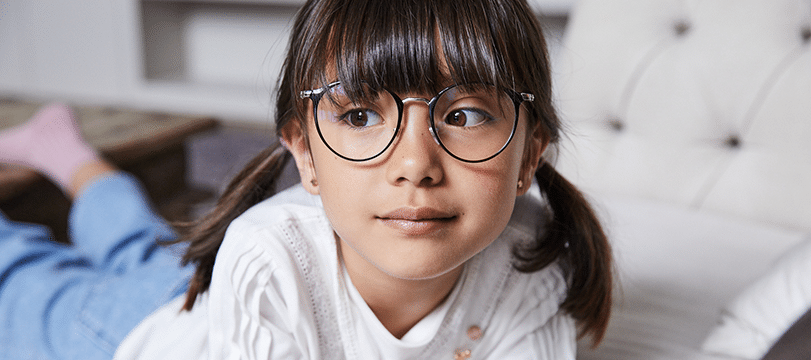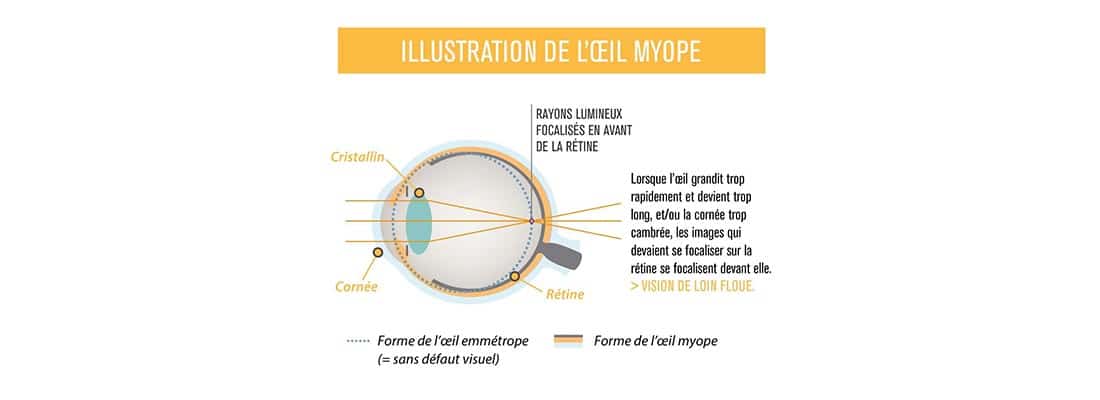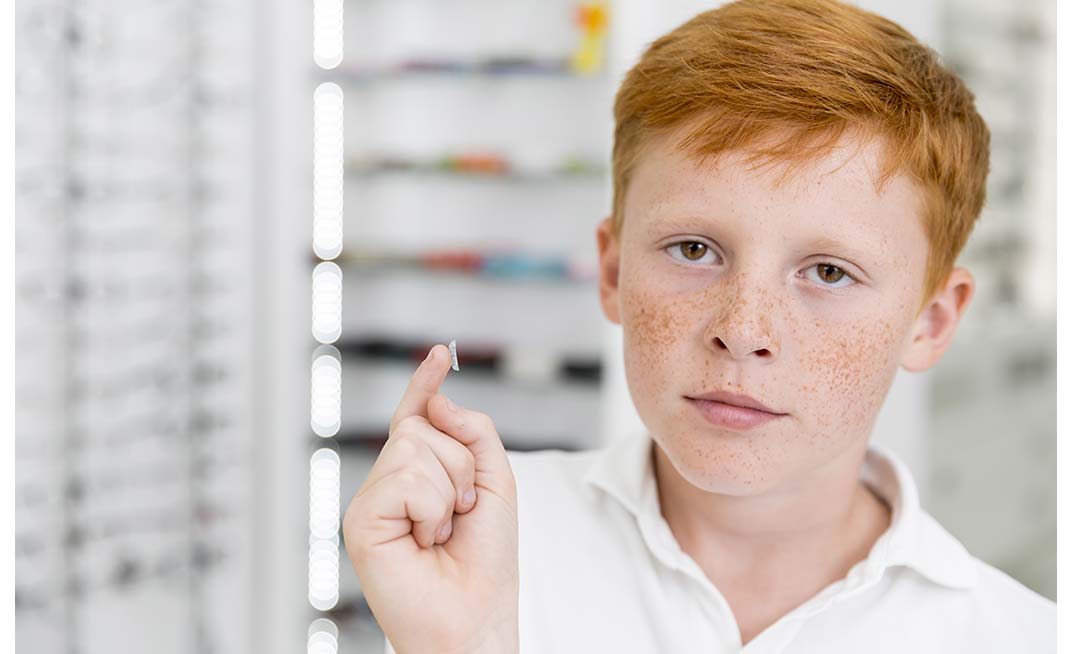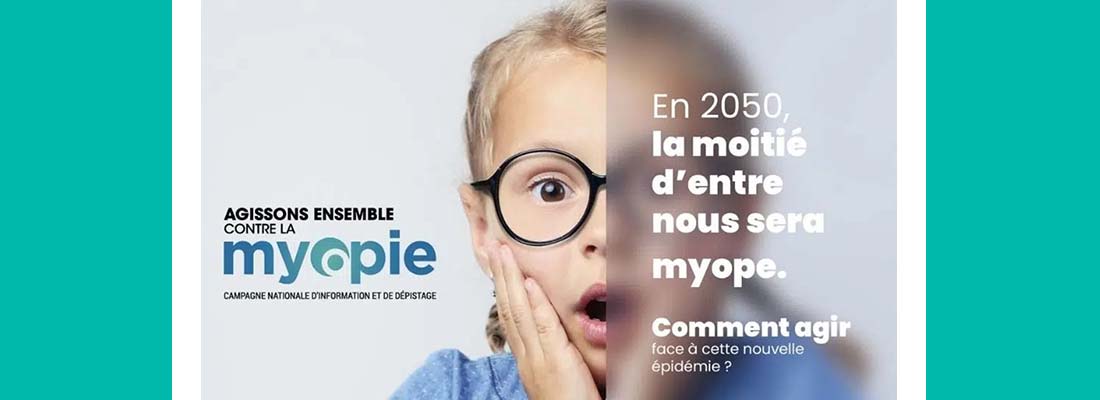
02:47 -
© Essilor International
Considered an epidemic in many countries worldwide, near-sightedness (or myopia) is an eyesight condition that progresses rapidly during childhood and adolescence. This is a major public health challenge and has been the subject of recent studies, technological innovations, and awareness campaigns pursuing the same goal: ramping up screening and slowing its progression as soon as possible. EYESEEmag has compiled five main questions to offer an overview of the issue.
Could your child be near-sighted? If they squint, suffer from migraines and tiredness, or struggle with learning, you may want to visit your eye doctor. This is not obligatory, and difficulties in booking appointments are enough to discourage many parents, but it will be worth it. Near-sightedness is not an illness, nor is it an inevitability. In fact, there are many solutions to slow its progression.

© Hoya
Around 51% of French people and 43% of parents of near-sighted children₁ don’t know that myopia affects how we see distant objects. Someone who is near-sighted will have blurry vision when looking at objects more than 15 feet away, sometimes less. This is because their eyes are “too long.” Due to an abnormal elongation of the eye, light does not focus on the retina, but just in front of it. What’s more, reduced peripheral vision, which holds images behind the retina (also known as peripheral hypermetropia), worsens eye elongation and causes near-sightedness to progress. This creates a vicious circle, which we certainly want to avoid for our little ones!
According to the Report on Near-Sightedness in France carried out by IPSOS, most French people (61%) are unaware that myopia can be slowed. But it can! This is a highly relevant subject, as around half of the world’s population will be near-sighted by 2050. Worse still, young children are increasingly affected by this condition. Unfortunately, eye doctors are now seeing cases of myopia earlier in life, sometimes even before the age of eight.
While around 10% of cases are hereditary, environmental factors play the biggest role. They include spending too much time in front of screens, poor exposure to natural light, intense work, and prolonged close-up activities. A health-promoting lifestyle and a little self-discipline are essential!
But that’s not all! Here are the solutions currently available.

© Freepik
Orthokeratology lenses are the solution that eye doctors have been recommending since the 1990s. This mouthful of a term refers to a technique using rigid contact lenses that gently remodel the cornea during the night. In the morning, the cornea returns to its original shape and your little ones will enjoy perfect vision throughout the day without having to wear glasses. To find out more, check out the Menicon Z Night lenses!
Daily-use soft lenses are new alternative, and while they are more recent, their effectiveness has already been established among children between the ages of 8 and 12. For example, to prevent eye elongation, MiSight® 1 Day lenses by Cooper Vision have four concentric zones that refocus peripheral images on the retina.
Depending on how near-sightedness is progressing and the different therapies available, your little ones might need glasses. So long as they accept them and wear them all day (for 12 hours), glasses equipped with the latest innovations will be as effective as contact lenses. Standard lenses will correct near-sightedness while worn, but they will not slow its progression.
Orthokeratology has another few tricks up its sleeve, such as Myofx lenses from Alsace-based brand Verbal, which recreate the geometry of the corneal surface.
However, lenses that slow the progression of near-sightedness now aim to correct peripheral hypermetropia as well. In the search to refocus peripheral rays onto the retina, industry leaders such as Hoya with its Miyo Smart lenses in Japan, Essilor with its Stellest lenses in France, and Zeiss with its MyoVision ACE lenses in Germany have each developed their own patented technology working to improve peripheral defocus.
Clinical studies have demonstrated the effectiveness of these lenses on the extent of visual correction. However, according to Margaux Chiffoleau, optician and manager of the L’Ingénieur Chevallier optician and eyewear store in Paris, more research is needed. As the author of a dissertation on the subject₂, Margaux has worked with several lens manufacturers and is careful to tell parents that there is still no miracle cure.
Remember that only a qualified eye doctor can choose a treatment, or a combination of treatments (such as atropine eyedrops), and adapt them to your child’s specific needs.

© ensemblecontrelamyopie.fr
The opticians and eye doctors contacted by EYESEEMAG highlighted that all the right conditions must be in place to escape this epidemic. As parents, we play an essential role. Screen use should be limited and children must be encouraged to spend time outside. We should also bring them to see a specialist before the age of six, as was customary not so long ago. Those who remember this era regret the dramatic decrease in screening observed today. If you want to find out more, the Institut d’Education Médicale et de Prévention in France has created a near-sightedness information and screening awareness campaign, along with a website, ensemblecontrelamyopie.fr.
₁IPSOS Report on Near-Sightedness in France
₂Understanding the Global Prevalence of Near-Sightedness
Written by Alexander Uff